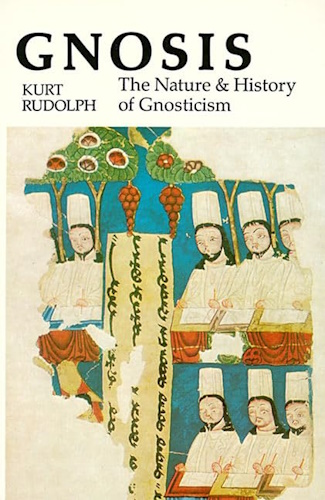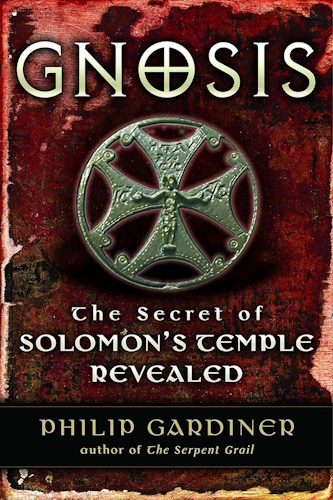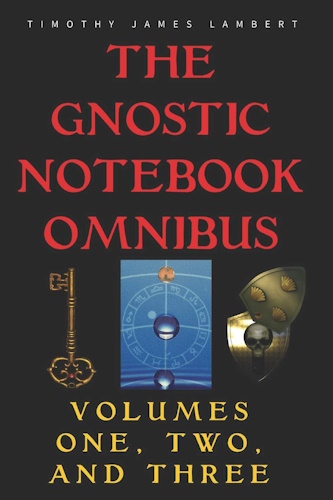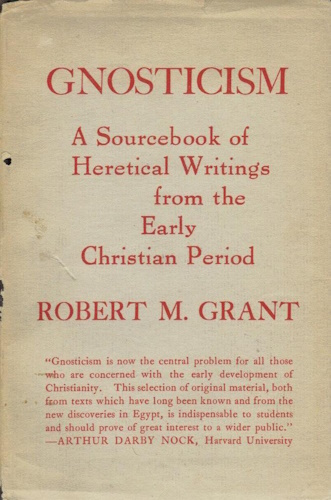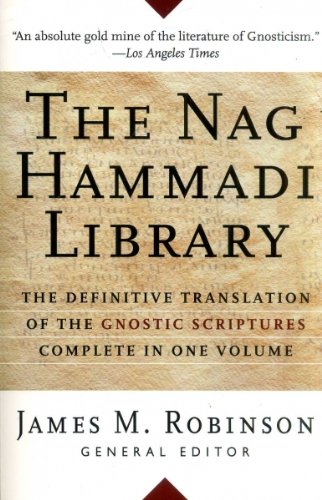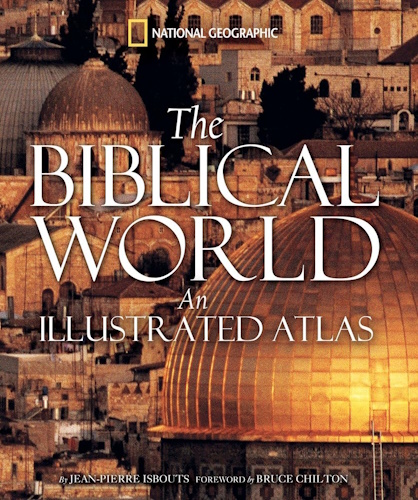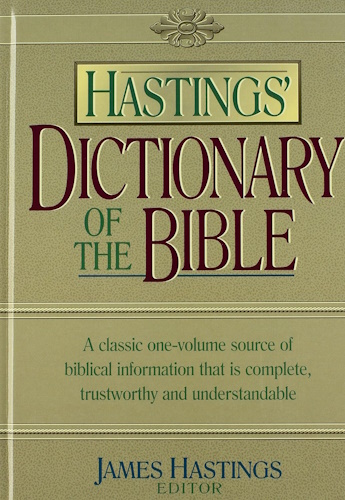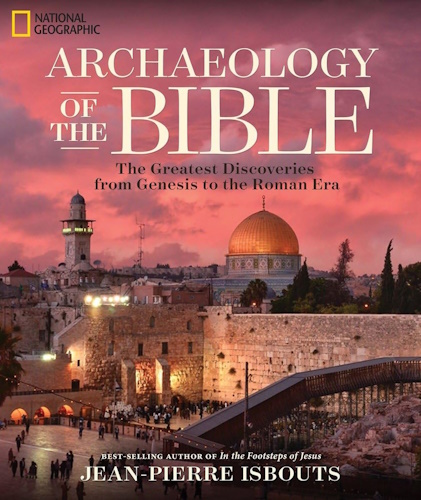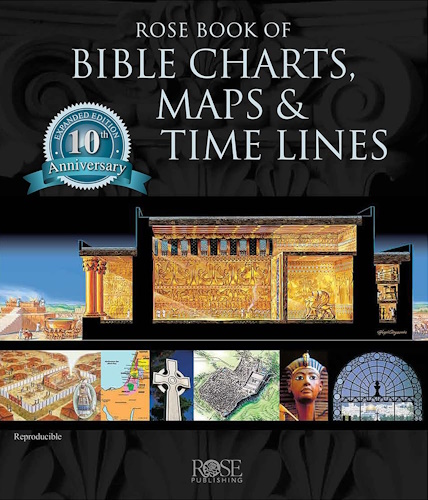
The Testimony of Truth
Translated by Søren Giversen and Birger A. Pearson
I will speak to those who know to hear not with the ears of the body but with the ears of the mind. For many have sought after the truth and have not been able to find it; because there has taken hold of them the old leaven of the Pharisees and the scribes of the Law. And the leaven is the errant desire of the angels and the demons and the stars. As for the Pharisees and the scribes, it is they who belong to the archons who have authority over them.
For no one who is under the Law will be able to look up to the truth, for they will not be able to serve two masters. For the defilement of the Law is manifest; but undefilement belongs to the light. The Law commands (one) to take a husband (or) to take a wife, and to beget, to multiply like the sand of the sea. But passion, which is a delight to them, constrains the souls of those who are begotten in this place, those who defile and those who are defiled, in order that the Law might be fulfilled through them. And they show that they are assisting the world; and they turn away from the light, who are unable to pass by the archon of darkness until they pay the last penny.
But the Son of Man came forth from Imperishability, being alien to defilement. He came to the world by the Jordan river, and immediately the Jordan turned back. And John bore witness to the descent of Jesus. For it is he who saw the power which came down upon the Jordan river; for he knew that the dominion of carnal procreation had come to an end. The Jordan river is the power of the body, that is, the senses of pleasures. The water of the Jordan is the desire for sexual intercourse. John is the archon of the womb.
And this is what the Son of Man reveals to us: It is fitting for you (pl.) to receive the word of truth, if one will receive it perfectly. But as for one who is in ignorance, it is difficult for him to diminish his works of darkness which he has done. Those who have known Imperishability, however, have been able to struggle against passions [...]. I have said to you, "Do not build nor gather for yourselves in the place where the brigands break open, but bring forth fruit to the Father."
The foolish - thinking in their heart that if they confess, "We are Christians," in word only (but) not with power, while giving themselves over to ignorance, to a human death, not knowing where they are going nor who Christ is, thinking that they will live, when they are (really) in error - hasten towards the principalities and authorities. They fall into their clutches because of the ignorance that is in them. For (if) only words which bear testimony were effecting salvation, the whole world would endure this thing and would be saved. But it is in this way that they drew error to themselves. ...
... (3 lines unrecoverable)
... they do not know that they will destroy themselves. If the Father were to desire a human sacrifice, he would become vainglorious.
For the Son of Man clothed himself with their first-fruits; he went down to Hades and performed many mighty works. He raised the dead therein; and the world-rulers of darkness became envious of him, for they did not find sin in him. But he also destroyed their works from among men, so that the lame, the blind, the paralytic, the dumb, (and) the demon-possessed were granted healing. And he walked upon the waters of the sea. For this reason he destroyed his flesh from [...] which he [...]. And he became [...] salvation [...] his death ...
... (4 lines unrecoverable)
... everyone [...] how many they are! They are blind guides, like the disciples. They boarded the ship; at about thirty stadies, they saw Jesus walking on the sea. These are empty martyrs, since they bear witness only to themselves. And yet they are sick, and they are not able to raise themselves.
But when they are "perfected" with a (martyr's) death, this is the thought that they have within them: "If we deliver ourselves over to death for the sake of the Name we will be saved." These matters are not settled in this way. But through the agency of the wandering stars they say they have "completed" their futile "course", and [...] say, [...]. But these [...] they have delivered themselves ...
... (7 lines unrecoverable)
... but they resemble [...] them. They do not have the word which gives life.
And some say, "On the last day we will certainly arise in the resurrection." But they do not know what they are saying, for the last day is when those belonging to Christ [...] the earth, which is [...]. When the time was fulfilled, he destroyed their archon of darkness [...] soul(s) ...
... (10 lines unrecoverable)
... he stood [...] they asked what they have been bound with, and how they might properly release themselves. And they came to know themselves, who they are, or rather, where they are now, and what is the place in which they will rest from their senselessness, arriving at knowledge. These Christ will transfer to the heights, since they have renounced foolishness (and have) advanced to knowledge. And those who have knowledge ...
... (11 lines unrecoverable)
... the great [...] resurrection [...], he has to come to know the Son of Man, that is, he has come to know himself. This is the perfect life, that man know himself by means of the All.
Do not expect, therefore, the carnal resurrection, which is destruction; and they are not stripped of it (the flesh) who err in expecting a resurrection that is empty. They do not know the power of God, nor do they understand the interpretation of the scriptures, on account of their double-mindedness. The mystery which the Son of Man spoke about, [...], in order that [...] destroy ...
... (2 lines unrecoverable)
... man who [...] book, which is written [...] for they have ...
... (1 line unrecoverable)
... blessed [...] within them, and they dwell before God under the light yoke. Those who do not have the life-giving word in their heart will die; and in their thought they have become manifest to the Son of Man, according to the manner of their activity and their error [...] of this sort. They [...] as he divides the [...], and they do not understand that the Son of Man is coming from him.
But when they have come up to [...] sacrifice, they die in a human way, and they deliver themselves ...
... (2 lines unrecoverable)
... a death ...
... (3 lines unrecoverable)
... those who [...], they are many [...], each one [...] pervert [...] gain [...] their mind. Those who receive him to themselves with uprightness and power and every knowledge are the ones whom he will transfer to the heights, unto life eternal.
But those who receive him to themselves with ignorance, the pleasures which are defiled prevail over them. It is those people who used to say; "God created members for our use, for us to grow in defilement, in order that we might enjoy ourselves." And they cause God to participate with them in deeds of this sort; and they are not steadfast upon the earth. Nor will they reach heaven, but [...] place will [...] four ...
... (3 lines unrecoverable)
... unquenchable ...
... (3 lines unrecoverable)
... word [...] upon the Jordan river, when he came to John at the time he was baptized. The Holy Spirit came down upon him as a dove [...] accept for ourselves that he was born of a virgin and he took flesh; he [...] having received power. Were we also begotten from a virginal state or conceived by the word? Rather, we have been born again by the word. Let us therefore strengthen ourselves as virgins in the [...].
The males dwell [...] the virgin, by means of [...] in the word [...]. But the word of [...] and spirit ...
... (4 lines unrecoverable)
... is the Father [...] for the man ...
... (1 line unrecoverable)
... like Isaiah, who was sawed with a saw, (and) he became two. So also the Son of Man divides us by the word of the cross. It divides the day from the night and the light from the darkness and the corruptible from incorruptibility, and it divides the males from the females. But Isaiah is the type of the body. The saw is the word of the Son of Man, which separates us from the error of the angels.
No one knows the God of truth except solely the man who will forsake all of the things of the world, having renounced the whole place, (and) having grasped the fringe of his garment. He has set himself up as a power; he has subdued desire in every way within himself. He has [...] and he has turned to him [...], having also examined [...] in becoming [...] the mind. And he [...] from his soul [...] there [...] he has ...
... (1 line unrecoverable)
... in what way [...] the flesh which [...] in what way [...] out of it, and how many powers does he have? And who is the one who has bound him? And who is the one who will loose him? And what is the light? And what is the darkness? And who is the one who has created the earth? And who is God? And who are the angels? And what is soul? And what is spirit? And where is the voice? And who is the one who speaks? And who is the one who hears? Who is the one who gives pain? And who is the one who suffers? And who is it who has begotten the corruptible flesh? And what is the governance? And why are some lame, and some blind, and some [...], and some [...], and some rich, and some poor? And why are some powerless, some brigands? ...
... (4 lines unrecoverable)
... he having [...] as he again [...], fighting against thoughts of the archons and the powers and the demons, not giving them a place in which to rest. But he struggled against their passions [...], he condemned their error. He cleansed his soul from the transgressions which he had committed with an alien hand. He stood up, being upright within himself, because he exists in everyone, and because he has death and life within himself, and he exists in the midst of both of them. And when he had received the power, he turned towards the parts of the right, and he entered into the truth, having forsaken all things pertaining to the left, having been filled with wisdom, with counsel, with understanding, and with insight and an eternal power. And he broke open his bonds. Those who had formed the whole place, he condemned. But they did not find [...] hidden within him.
And he gave command to himself; he began to know himself and to speak with his mind, which is the father of the truth, concerning the unbegotten aeons, and concerning the virgin who brought forth the light. And he thinks about the power which flowed over the whole place, and which takes hold of him. And he is a disciple of his mind, which is male. He began to keep silent within himself until the day when he should become worthy to be received above. He rejects for himself loquacity and disputations, and he endures the whole place; and he bears up under them, and he endures all of the evil things. And he is patient with every one; he makes himself equal to every one, and he also separates himself from them. And that which someone wants, he brings to him, in order that he might become perfect (and) holy. When the [...], he grasped him, having bound him upon [...], and he was filled with wisdom. He bore witness to the truth [...] the power, and he went into Imperishability, the place whence he came forth, having left the world, which has the appearance of the night, and those that whirl the stars in it. This, therefore, is the true testimony: When man comes to know himself and God, who is over the truth, he will be saved, and he will crown himself with the crown unfading.
John was begotten by the World through a woman, Elizabeth; and Christ was begotten by the world through a virgin, Mary. What is (the meaning of) this mystery? John was begotten by means of a womb worn with age, but Christ passed through a virgin's womb. When she had conceived, she gave birth to the Savior. Furthermore, she was found to be a virgin again. Why, then do you (pl.) err and not seek after these mysteries, which were prefigured for our sake?
It is written in the Law concerning this, when God gave a command to Adam, "From every tree you may eat, but from the tree which is in the midst of Paradise do not eat, for on the day that you eat from it, you will surely die." But the serpent was wiser than all the animals that were in Paradise, and he persuaded Eve, saying, "On the day when you eat from the tree which is in the midst of Paradise, the eyes of your mind will be opened." And Eve obeyed, and she stretched forth her hand; she took from the tree and ate; she also gave to her husband with her. And immediately they knew that they were naked, and they took some fig-leaves (and) put them on as girdles.
But God came at the time of evening, walking in the midst of Paradise. When Adam saw him, he hid himself. And he said, "Adam, where are you?" He answered (and) said, "I have come under the fig tree." And at that very moment, God knew that he had eaten from the tree of which he had commanded him, "Do not eat of it." And he said to him, "Who is it who has instructed you?" And Adam answered, "The woman whom you have given me." And the woman said, "It is the serpent who instructed me." And he (God) cursed the serpent, and called him "devil." And he said, "Behold, Adam has become like one of us, knowing evil and good." Then he said, "Let us cast him out of paradise, lest he take from the tree of life, and eat, and live forever."
But what sort is this God? First he maliciously refused Adam from eating of the tree of knowledge, and, secondly, he said "Adam, where are you?" God does not have foreknowledge? Would he not know from the beginning? And afterwards, he said, "Let us cast him out of this place, lest he eat of the tree of life and live forever." Surely, he has shown himself to be a malicious grudger! And what kind of God is this? For great is the blindness of those who read, and they did not know him. And he said, "I am the jealous God; I will bring the sins of the fathers upon the children until three (and) four generations." And he said, "I will make their heart thick, and I will cause their mind to become blind, that they might not know nor comprehend the things that are said." But these things he has said to those who believe in him and serve him!
And in one place, Moses writes, "He made the devil a serpent <for> those whom he has in his generation." Also, in the book which is called "Exodus," it is written thus: "He contended against the magicians, when the place was full of serpents according to their wickedness; and the rod which was in the hand of Moses became a serpent, (and) it swallowed the serpents of the magicians."
Again it is written (Nm 21:9), "He made a serpent of bronze (and) hung it upon a pole ...
... (1 line unrecoverable)
... which [...] for the one who will gaze upon this bronze serpent, none will destroy him, and the one who will believe in this bronze serpent will be saved." For this is Christ; those who believed in him have received life. Those who did not believe will die.
What, then, is this faith? They do not serve ...
... (16 lines unrecoverable)
... and you (pl.) [...] we [...] and you do not understand Christ spiritually when you say, "We believe in Christ". For this is the way Moses writes in every book. The book of the generation of Adam is written for those who are in the generation of the Law. They follow the Law and they obey it, and ...
... ( 1 line unrecoverable)
... together with the ...
pp. 51-54 of codex almost completely missing
... the Ogdoad, which is the eighth, and that we might receive that place of salvation." But they know not what salvation is, but they enter into misfortune, and into a [...] in death, in the waters. This is the baptism of death which they observe ...
... (6 lines unrecoverable)
... come to death [...] and this is [...] according to ...
... (lines 19 through end-of-page unrecoverable)
... he completed the course of Valentinus. He himself speaks about the Ogdoad, and his disciples resemble the disciples of Valentinus. They on their part, moreover, [...] leave the good, but they have worship of the idols ...
... (8 lines unrecoverable)
... he has spoken many words, and he has written many books [...] words ...
... (lines 16 through end-of-page unrecoverable)
... they are manifest from the confusion in which they are, in the deceit of the world. For they go to that place, together with their knowledge, which is vain.
Isidore also, his son, resembled Basilides. He also [...] many, and he [...], but he did not [...] this [...] other disciple(s) [...] blind [...], but he gave them [...] pleasures ...
... (lines 16 through end-of-page unrecoverable)
... they do not agree with each other. For the Simonians take wives (and) beget children; but the [...] abstain from their [...] nature [...] a passion [...] the drops of [...] anoint them ...
... (1 line unrecoverable)
... which we [...] they agree with each other [...] him [...] they ...
... (lines 14 through end-of-page unrecoverable)
... judgment(s) [...] these, on account of the [...] them [...] the heretics [...] schism(s) [...] and the males [...] are men [...] will belong to the world-rulers of darkness ...
... (1 line unrecoverable)
... of the world ...
... (1 line unrecoverable)
... they have [...] the archons [...] power(s) ...
... (1 line unrecoverable)
... judge them [...]. But the [...] word(s) of ...
... (lines 20 through end-of-page unrecoverable)
... speak, while they [...] become [...] in a fire unquenchable [...] they are punished.
But these who are from the generation of the Son of Man have revealed to the [...] in all of the affairs ...
... (2 lines unrecoverable)
... But it is difficult to [...] to find one [...] and two ...
... (2 lines unrecoverable)
... For the Savior said to his disciples, [...] one in ...
... (lines 19 through end-of-page unrecoverable)
... and he has [...] wisdom, as well as counsel and understanding and intelligence and knowledge and power and truth. And he has some [...] from above [...], the place where the Son of Man ...
... (2 lines unrecoverable)
... power [...] guard against ...
... (lines 14 through end-of-page unrecoverable)
... he knows [...] understands ...
... (1 line unrecoverable)
... worthy of him [...] true [...] alien [...]. But [...], together with [...] evil, in ...
... (2 lines unrecoverable)
... he received baptism [...], and those that ...
... (lines 13 through end-of-page unrecoverable)
pp. 63-64 of codex missing
... in a dream [...] silver [...]. But [...] becomes wealthy [...] among the authorities ...
... (1 line unrecoverable)
... But the sixtieth [...], thus [...] world [...] they [...] gold ...
... (18 lines unrecoverable)
... they think ...
... (1 line unrecoverable)
... we have been released from the flesh. ...
... (1 line unrecoverable)
... not turn him to [...] Jesus ...
... (1 line unrecoverable)
... the beginning [...] a son ...
... (1 line unrecoverable)
... out of [...], which is the pattern [...] light of ...
... (16 lines unrecoverable)
... to find from [...] defilement which ...
... (1 line unrecoverable)
... they do not blaspheme [...] them not, neither is there any pleasure nor desire, nor can they control them. It is fitting that they should become undefiled, in order that they might show to every one that they are from the generation of the Son of Man, since it is about them that the Savior bore witness.
But those who are from the seed of Adam are manifest by their deeds, which are their work. They have not ceased from desire which is wicked [...]. But some [...] the dogs [...] the angels for [...] which they beget [...] will come [...] with their ...
... (9 lines unrecoverable)
... move as they [...] on the day when they will beget children. Not only that, but they have intercourse while they are giving suck.
But others are caught up in the death of [...]. They are pulled <every> which way, (and) they are gratified by unrighteous Mammon. They lend money at interest; they waste time; and they do not work. But he who is father of Mammon is (also) father of sexual intercourse.
But he who is able to renounce them shows that he is from the generation of the Son of Man, (and) has power to accuse them. [...] he restrains [...] part(s) in a [...] in wickedness, and he makes the outer like the inner. He resembles an angel which ...
... (1 line unrecoverable)
... power [...] said them. But the one ...
... (5 lines unrecoverable)
And having withdrawn [...], he became silent, having ceased from loquacity and disputations. But he who has found the life-giving word, and he who has come to know the Father of Truth, has come to rest; he has ceased seeking, having found. And when he found, he became silent. But few are the things he used to say to those that [...] with their intellectual mind the [...].
There are some, who upon entering the faith, receive a baptism on the ground that they have it as a hope of salvation, which they call the "seal", not knowing that the fathers of the world are manifest (in) that place. But he himself knows that he is sealed. For the Son of Man did not baptize any of his disciples. But [...], if those who are baptized were headed for life, the world would become empty. And the fathers of baptism were defiled.
But the baptism of truth is something else; it is by renunciation of the world that it is found. But those who say only with the tongue that they are renouncing it are lying, and they are coming to the place of fear. Moreover, they are humbled within it. Just as those to whom it was given to have been condemned, they shall get something!
They are wicked in their behavior! Some of them fall away to the worship of idols. Others have demons dwelling with them, as did David the king. He is the one who laid the foundation of Jerusalem; and his son Solomon, whom he begat in adultery, is the one who built Jerusalem by means of the demons, because he received power. When he had finished building, he imprisoned the demons in the temple. He placed them into seven waterpots. They remained a long time in the waterpots, abandoned there. When the Romans went up to Jerusalem, they discovered the waterpots, and immediately the demons ran out of the waterpots, as those who escape from prison. And the waterpots remained pure thereafter. And since those days, they dwell with men who are in ignorance, and they have remained upon the earth.
Who, then, is David? And who is Solomon? And what is the foundation? And what is the wall which surrounds Jerusalem? And who are the demons? And what are the waterpots? And who are the Romans? But these are mysteries ...
... (11 lines unrecoverable)
... victorious over [...] the Son of Man [...] undefiled ...
... (3 lines unrecoverable)
... and he [...] when he [...]. For [...] is a great ...
... (1 line unrecoverable)
... to this nature ...
... (1 line unrecoverable)
... those that [...] all in a [...] blessed, and they [...] like a salamander. It goes into the flaming fire which burns exceedingly; it slithers into the furnace ...
... (13 lines unrecoverable)
... the furnace ...
... (1 line unrecoverable)
... the boundaries [...], that they might see [...] and the power [...] sacrifice. Great is the sacrifice ...
... (2 lines unrecoverable)
..., but in a [...] aside [...]. And the Son of Man [...], and he has become manifest through the bubbling fountain of immortality. ...
... (1 line unrecoverable)
... he is pure, and he is [...]. A free man is not envious. He is set apart from everyone, from every audacity and envy the power of which is great [...] is (a) disciple [...] pattern of law [...] these [...] only ...
... (2 lines unrecoverable)
... they placed him under a [...] a teaching ...
... (1 line unrecoverable)
... his teaching, saying, "Even if an angel comes from heaven, and preaches to you beyond that which we preached to you, may he be anathema," (Gal 1:8) not letting the [...] of the soul which [...] freedom [...]. For they are still immature [...] they are not able to keep this law which works by means of these heresies - though it is not they, but the powers of Sabaoth - by means of the [...] the doctrines [...] as they have been jealous of some [...] law(s) in Christ. Those who will [...] power [...] they reach the [...] the twelve judge [...] them [...] the fountain of immortality ...
... (3 lines unrecoverable)
... in order that ...
... (3 lines unrecoverable)
... good [...] the whole place. [...] there the enemies. He baptized himself, and the [...] he became divine; he flew up, (and) they did not grasp him. [...] there the enemies [...], since it was not possible for them to bring him down again. If every [...] grasps him with ignorance, attending to those who teach in the corners by means of carved things and artful tricks, they are not able [...].
pp. 75-76 of codex missing
The Testimony of Truth
Selection made from James M. Robinson, ed., The Nag Hammadi Library, revised edition.
HarperCollins, San Francisco, 1990.
![]()
![]()
-
Urantia Book, 44:0.11 - The Celestial Artisans
Never in your long ascendancy will you lose the power to recognize your associates of former existences. Always, as you ascend inward in the scale of life, will you retain the ability to recognize and fraternize with the fellow beings of your previous and lower levels of experience. Each new translation or resurrection will add one more group of spirit beings to your vision range without in the least depriving you of the ability to recognize your friends and fellows of former estates.
-
Princess Bride 1987 Wallace Shawn (Vizzini) and Mandy Patinkin (Inigo Montoya)
Vizzini: HE DIDN'T FALL? INCONCEIVABLE.
Inigo Montoya: You keep using that word. I do not think it means what you think it means. -
Urantia Book, 117:4.14 - The Finite God
And here is mystery: The more closely man approaches God through love, the greater the reality -- actuality -- of that man. The more man withdraws from God, the more nearly he approaches nonreality -- cessation of existence. When man consecrates his will to the doing of the Father's will, when man gives God all that he has, then does God make that man more than he is.
-
Urantia Book, 167:7.4 - The Talk About Angels
"And do you not remember that I said to you once before that, if you had your spiritual eyes anointed, you would then see the heavens opened and behold the angels of God ascending and descending? It is by the ministry of the angels that one world may be kept in touch with other worlds, for have I not repeatedly told you that I have other sheep not of this fold?"
-
Urantia Book, Foreword - 0:12.12 - The Trinities
But we know that there dwells within the human mind a fragment of God, and that there sojourns with the human soul the Spirit of Truth; and we further know that these spirit forces conspire to enable material man to grasp the reality of spiritual values and to comprehend the philosophy of universe meanings. But even more certainly we know that these spirits of the Divine Presence are able to assist man in the spiritual appropriation of all truth contributory to the enhancement of the ever-progressing reality of personal religious experience—God-consciousness.
-
Urantia Book, 1:4.3 - The Mystery Of God
When you are through down here, when your course has been run in temporary form on earth, when your trial trip in the flesh is finished, when the dust that composes the mortal tabernacle "returns to the earth whence it came"; then, it is revealed, the indwelling "Spirit shall return to God who gave it." There sojourns within each moral being of this planet a fragment of God, a part and parcel of divinity. It is not yet yours by right of possession, but it is designedly intended to be one with you if you survive the mortal existence.
-
Urantia Book, 1:4.1 - The Mystery Of God
And the greatest of all the unfathomable mysteries of God is the phenomenon of the divine indwelling of mortal minds. The manner in which the Universal Father sojourns with the creatures of time is the most profound of all universe mysteries; the divine presence in the mind of man is the mystery of mysteries.
-
Urantia Book, 1:4.6 - The Mystery Of God
To every spirit being and to every mortal creature in every sphere and on every world of the universe of universes, the Universal Father reveals all of his gracious and divine self that can be discerned or comprehended by such spirit beings and by such mortal creatures. God is no respecter of persons, either spiritual or material. The divine presence which any child of the universe enjoys at any given moment is limited only by the capacity of such a creature to receive and to discern the spirit actualities of the supermaterial world.
-
Urantia Book, 11:0.1 - The Eternal Isle Of Paradise
Paradise is the eternal center of the universe of universes and the abiding place of the Universal Father, the Eternal Son, the Infinite Spirit, and their divine co-ordinates and associates. This central Isle is the most gigantic organized body of cosmic reality in all the master universe. Paradise is a material sphere as well as a spiritual abode. All of the intelligent creation of the Universal Father is domiciled on material abodes; hence must the absolute controlling center also be material, literal. And again it should be reiterated that spirit things and spiritual beings are real.
-
Urantia Book, 50:6.4 - Planetary Culture
Culture presupposes quality of mind; culture cannot be enhanced unless mind is elevated. Superior intellect will seek a noble culture and find some way to attain such a goal. Inferior minds will spurn the highest culture even when presented to them ready-made.
-
Urantia Book, 54:1.6 - True And False Liberty
True liberty is the associate of genuine self-respect; false liberty is the consort of self-admiration. True liberty is the fruit of self-control; false liberty, the assumption of self-assertion. Self-control leads to altruistic service; self-admiration tends towards the exploitation of others for the selfish aggrandizement of such a mistaken individual as is willing to sacrifice righteous attainment for the sake of possessing unjust power over his fellow beings.
-
Urantia Book, 54:1.9 - True And False Liberty
How dare the self-willed creature encroach upon the rights of his fellows in the name of personal liberty when the Supreme Rulers of the universe stand back in merciful respect for these prerogatives of will and potentials of personality! No being, in the exercise of his supposed personal liberty, has a right to deprive any other being of those privileges of existence conferred by the Creators and duly respected by all their loyal associates, subordinates, and subjects.
-
Urantia Book, 54:1.8 - True And False Liberty
There is no error greater than that species of self-deception which leads intelligent beings to crave the exercise of power over other beings for the purpose of depriving these persons of their natural liberties. The golden rule of human fairness cries out against all such fraud, unfairness, selfishness, and unrighteousness.


